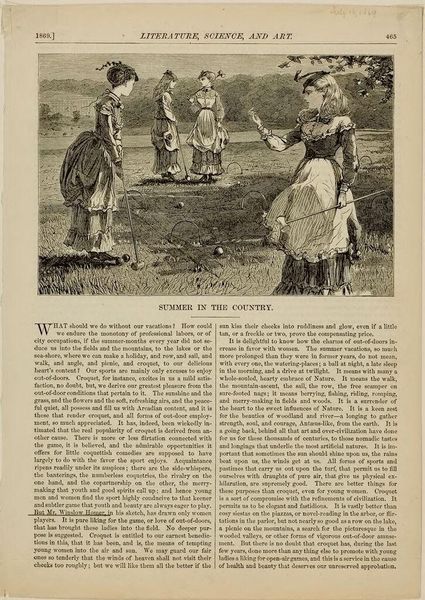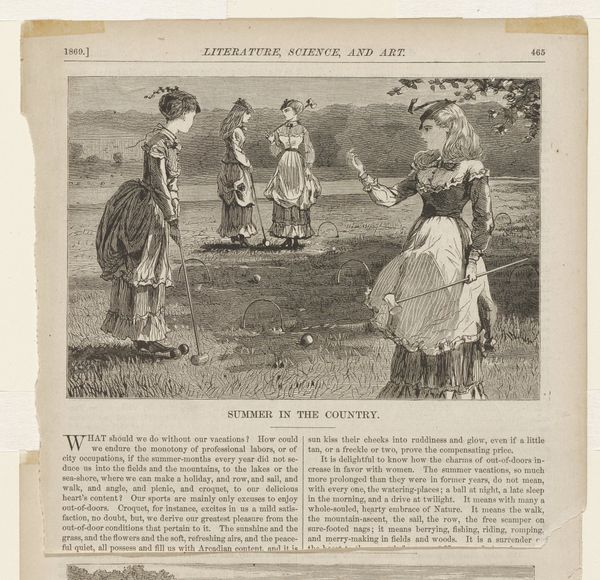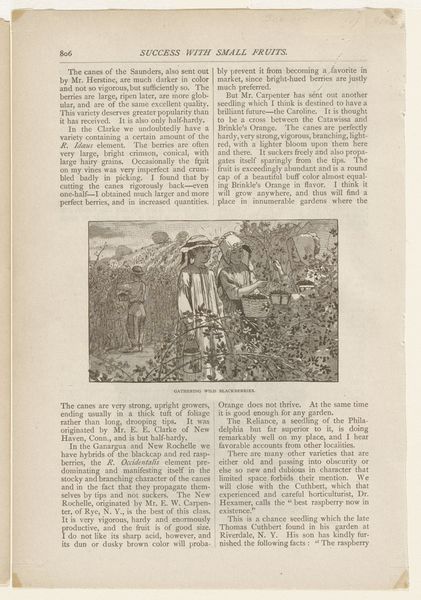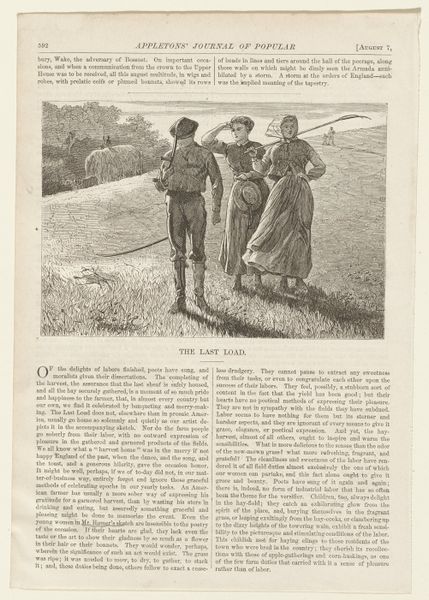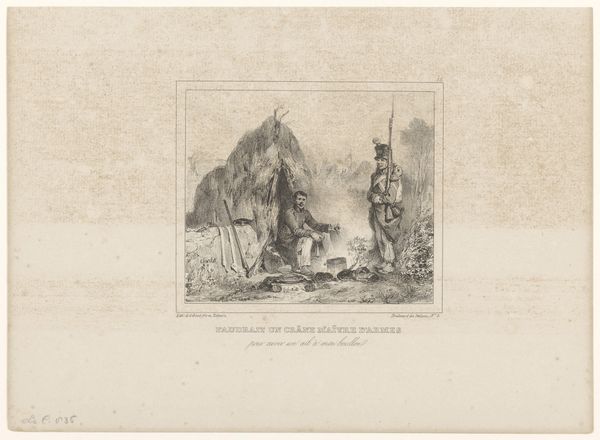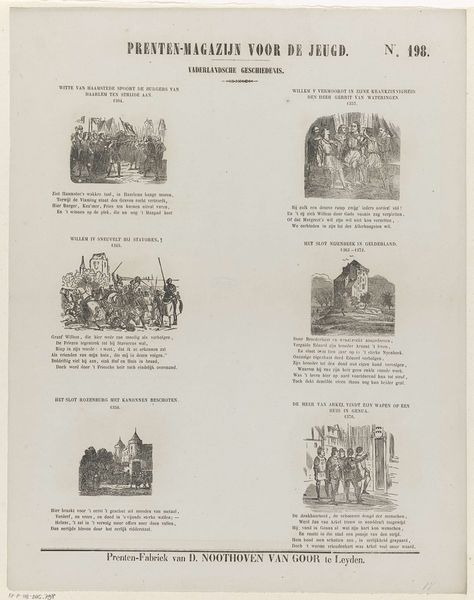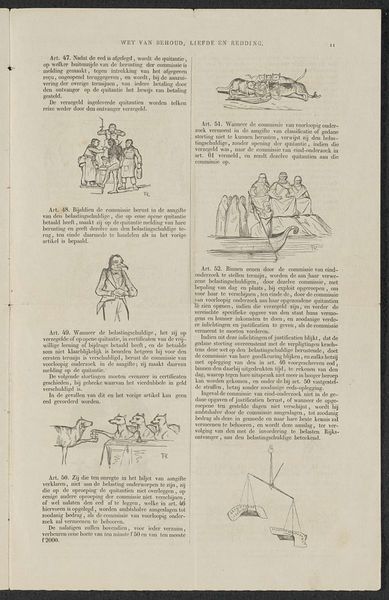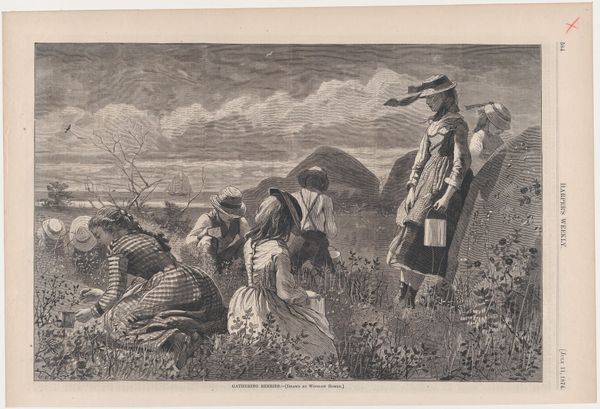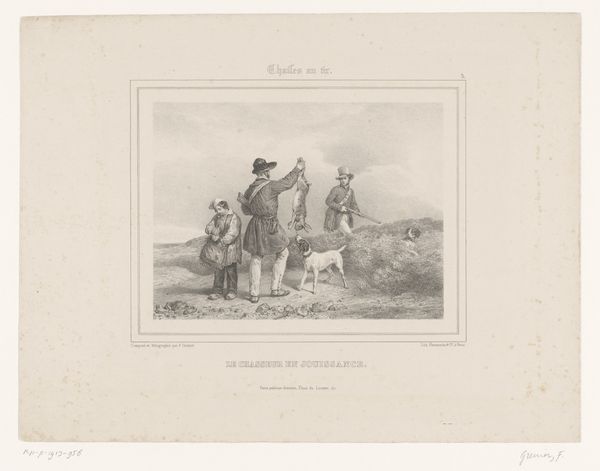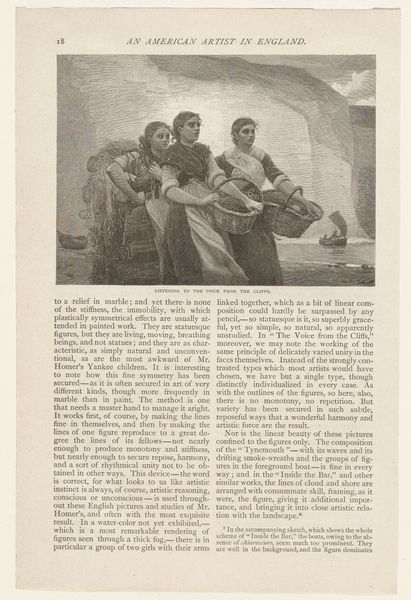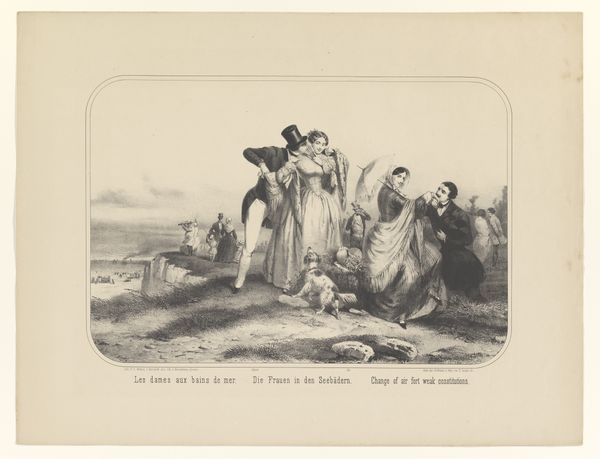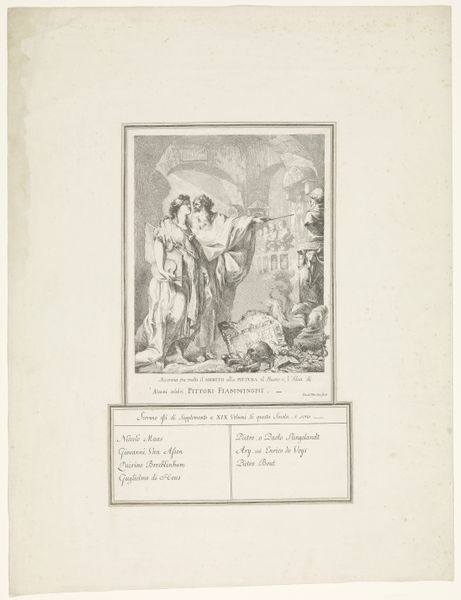
print, etching, woodcut, wood-engraving
# print
#
impressionism
#
etching
#
landscape
#
woodcut
#
united-states
#
genre-painting
#
wood-engraving
Dimensions: 4 7/16 x 6 9/16 in. (11.27 x 16.67 cm) (image)10 7/8 x 6 15/16 in. (27.62 x 17.62 cm) (sheet)
Copyright: Public Domain
Curator: Let’s turn our attention now to a fascinating wood engraving by Winslow Homer called *Summer in the Country*. It dates from 1869 and we’re fortunate to have it here at the Minneapolis Institute of Art. Editor: It's incredibly charming. The lightness and openness really resonate. I love how he's captured these women playing croquet, but it's not just about the game, is it? It evokes something about leisure, society, and maybe even the limited roles women had then. Curator: Precisely! As a wood engraving, intended for mass distribution, it gives us insight into popular conceptions of leisure and gender. It was published in a magazine titled *Literature, Science, and Art.* So right away it suggests it sees art’s role in shaping minds, not just creating beauty. Editor: The way the women are rendered interests me. Their detailed dresses, for instance. How much do those symbolize restriction and cultural expectation, and to what extent is this image subtly suggesting that even while constrained they are finding small liberties? I wonder, too, how much that croquet hoop in the foreground functions as a subtle symbol – the boundary around them, their lives… Curator: Symbolism is at play here. Notice how they're framed within a larger landscape, both literally and figuratively. The text surrounding the image at the time was keen to encourage open-air games and connect this type of activity to an appreciation of nature as a whole. You are correct; they are playing the game of social mores. Editor: So the image is not simply a representation but a carefully constructed argument about the virtues of outdoor activities and the role of women in society. I find myself looking closer, trying to discern their expressions. Are they truly free in these moments, or simply performing the expected rituals of their class? Curator: The beauty of art lies in its ambiguity, inviting us to ask these very questions. It allows us to explore the nuances of past lives, and maybe, consider those expectations we ourselves live with today. Editor: Definitely. Winslow Homer’s wood engraving shows us the interplay between freedom and constraint, leisure and expectation, leaving a lasting impression long after we've walked away.
Comments
No comments
Be the first to comment and join the conversation on the ultimate creative platform.
